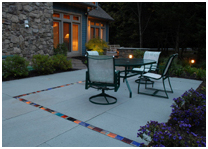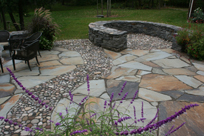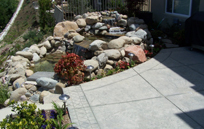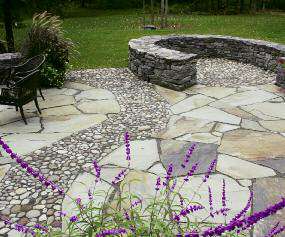Landscape, Plants, Hardscape & Decks
At the same time I’m interviewing my clients about their patios and determining exactly what they want and how they plan to use them (see my article in the October 9 edition of WaterShapes EXTRA!), I’m already thinking about traffic flow. As I see it, this constitutes one of the keys to
Let’s start by assuming that the home’s stage is set – that the main entry has been well defined, clearly established and graciously appointed. Let’s further assume that friends are coming over and that the weather is nice. In these circumstances,
Among all of the creatures who haunt the dreams of watershapers, I can’t think of any worse than gophers — especially when those gophers collude with clients who also happen to be attorneys. Not long ago, I had the lovely experience of being abused by both — first on the job site by the small, fur-bearing rodents, then in court by
Last time, Bruce Zaretsky discussed the importance of making a good first impression with a home’s landscape, starting with defining a pathway to the main entry. Here, he picks up that discussion while setting a broader front-yard stage. Today’s homes have many entries: front doors, service entries, back doors, garage doors and more. As a landscape designer, it is always my goal to
“You only get one chance to make a first impression.” How many times have you heard that in your life? There’s a good reason for it: First impressions last – and that’s particularly true with a home. This is why real estate agents typically bring up “curb appeal” when advising clients about how to sell at the best price. Why? Because if prospective buyers drive up and sees a messy, weed-plagued yard, chances are good that they will simply roll on by. And even if they stop, the negative initial impression will be hard to shake as they
It’s frequently tough to figure out how a person ever finds his or her way into a specific line of work. In my case, for example, I more or less fell into the faux-rock trade, never imagining that what seemed like a blind stumble would ultimately unlock my imagination in a whole range of unexpected ways. It all started when I was working in the oil industry in Alaska in the 1980s. When petroleum prices dropped, I was out of work and moved back to my home town of Tucson, Ariz., where I was hired as a laborer by the Larson Company, which was among the trailblazing firms starting to work in faux rock. I began by mixing concrete and did my fair share of grunt work. As luck would have it, I began showing some artistic promise and in a relatively short time found myself working on major projects and learning the process literally from the ground up. After a couple of hard years, I became a superintendent, a promotion that led to my involvement in major overseas projects, including aquariums in Tokyo and Osaka, Japan, as well as an extended stay in Italy. These were wonderful, formative experiences, but eventually I struck out on my own and
I’ve been a fanatical WaterShapes reader from the very beginning, drawn not only by the cool projects but also by its publication of columns and features written by people who actually had experience in the field. Sometimes I love those writers, sometimes they bug the daylights out of me – but always, I appreciate getting information right from the source. And I can’t recall ever having come away from reading WaterShapes without being inspired: pushed to think outside my comfort zone and, more important, convinced it’s always, always best to
Natural stone is a wonderful companion for just about every type of watershape: It lends a timeless, classy look to just about any setting, generating a sense of sturdy permanence as well as close associations with Mother Nature. As watershapers, we also know that natural stone can be extremely expensive and often represents a significant investment on the part of the client. This puts a premium on






















